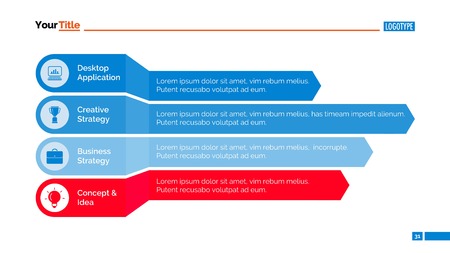What Are Unlinked Brand Mentions?
Unlinked brand mentions are instances where your brand name is mentioned online but without an actual hyperlink leading back to your website. These mentions can appear across a wide range of platforms, including blogs, forums, news articles, social media posts, and even in YouTube video descriptions or podcast show notes. While they dont provide direct backlink value in the traditional sense, they still play a significant role in SEO—especially as search engines become more sophisticated in understanding brand signals.
How Unlinked Mentions Appear Online
Unlinked mentions happen when someone talks about your brand without linking to your site. This could be a blogger reviewing your product, a journalist writing about your company in a news story, or a customer recommending you on Reddit. Unlike backlinks, these mentions don’t provide direct link equity, but they still contribute to your online presence and authority.
Common Platforms for Unlinked Brand Mentions
| Platform | Example of Unlinked Mention |
|---|---|
| Blogs | A blog post says “Nike released a new shoe this summer” without linking to Nikes website. |
| Forums | A user writes “I love using Adobe Photoshop for editing” on a design forum but doesnt include a link. |
| News Articles | A journalist covers Apples latest keynote and mentions the company several times without adding any hyperlinks. |
| Social Media | Someone tweets “Just bought a Tesla—best car ever!” without tagging or linking to Teslas profile or site. |
| YouTube Descriptions | A creator mentions “using Canva for thumbnails” during the video but doesnt include a link in the description. |
Why They Matter for SEO in 2025
In 2025, search engines like Google are placing increasing importance on brand signals and overall online presence. Even if theres no clickable link, repeated brand mentions across authoritative sources help build trust and relevance. These signals can indirectly influence search rankings by reinforcing your brands credibility and visibility in your niche.
Understanding how unlinked brand mentions work is the first step toward leveraging them for long-term SEO success.
2. Why Unlinked Mentions Still Matter in 2025
In 2025, Google’s algorithm continues to evolve beyond just counting backlinks. While links are still important, unlinked brand mentions—when your brand is referenced online without a clickable hyperlink—are playing an increasingly important role in how search engines understand and value your brand.
The Power of Brand Signals
Google is getting smarter at interpreting brand signals across the web. Even without a direct link, when someone mentions your business on a blog, news article, or social media post, it sends a signal to Google that your brand is being talked about. This contributes to your site’s:
- Authority – More mentions suggest you’re a known player in your industry.
- Relevance – Mentions in contextually relevant content help Google understand what your brand is about.
- Trust – Being cited by reputable sources (even without links) builds credibility in the eyes of both users and search engines.
Unlinked Mentions vs. Backlinks
While backlinks have long been seen as the gold standard for SEO, unlinked mentions offer complementary benefits. Here’s a quick comparison:
| Backlinks | Unlinked Mentions | |
|---|---|---|
| Crawlability | Easily followed by search engines | Mentioned but not directly followed |
| SEO Value | Direct impact on PageRank and rankings | Indirect impact through entity recognition and trust signals |
| User Exposure | Might get clicks if link is appealing | Makes brand visible even without interaction |
| Sourcing Credibility | Strong when from high-authority domains | Still valuable if from trustworthy sources |
The Role of Entities and Semantic Search
Google now focuses more on understanding entities—people, places, things—and how they relate to each other. If your brand is consistently mentioned alongside key industry topics or influencers, even without links, it helps Google connect the dots between your business and its niche. This enhances topical relevance and may improve rankings for related queries.
An Example: Tech Startup Recognition
If a new AI startup gets cited frequently in tech blogs as “the next big thing” but isn’t always linked to directly, Google still recognizes these mentions as proof that the brand has authority in the AI space. Over time, this could lead to better visibility in searches like “top AI startups” or “innovative AI companies.”
User Trust and Brand Awareness
A user may read about your brand multiple times across trusted sources—even if those mentions aren’t linked. That repetition builds familiarity and trust, increasing the likelihood they’ll search for you directly later. Google considers these branded searches as positive engagement signals, which can further boost your rankings.

3. Measuring the SEO Impact of Unlinked Mentions
In todays SEO landscape, unlinked brand mentions — times when your brand is referenced online without a hyperlink — play a growing role in search engine algorithms. While these mentions dont pass traditional link equity, they still send important signals to search engines about your brands relevance and authority. But how do you measure something that isn’t linked? Let’s explore some tools and techniques that help track and assess the SEO impact of unlinked brand mentions.
Why Monitoring Unlinked Mentions Matters
Google has become increasingly sophisticated at recognizing brand presence online, even without direct backlinks. Monitoring unlinked mentions can help you:
- Understand how often and where your brand is being talked about
- Identify potential backlink opportunities
- Gauge public sentiment around your brand
- Measure indirect SEO benefits like increased trust and topical relevance
Top Tools for Tracking Unlinked Brand Mentions
There are several tools that can help you discover and monitor unlinked mentions across the web. Here’s a quick comparison of popular options:
| Tool | Main Features | Best For |
|---|---|---|
| Google Alerts | Free alerts for new content mentioning your brand | Basic monitoring and real-time updates |
| Brand24 | Real-time social & web mentions, sentiment analysis, influence score | Comprehensive tracking with insights |
| Mention.com | Web & social media listening, competitive analysis, sentiment tracking | Brands looking for detailed analytics and reporting |
| Ahrefs Content Explorer | Search for keyword or brand name in millions of pages; filter by linked/unlinked mentions | SEO professionals identifying link opportunities |
| Screaming Frog + Custom Extraction | Crawl sites for brand mentions using custom filters/scripts | Advanced users wanting precise control over data scraping |
Techniques to Measure Their SEO Contribution
Create a Baseline with Branded Search Volume
If you notice an increase in branded searches (e.g., people Googling your company name), it could be tied to increased exposure from unlinked mentions. Use Google Search Console or Google Trends to track this over time.
Track Referral Traffic from Mentioned Pages
If a site mentions your brand but doesn’t link to it, users might still visit your site by searching for your name. Use Google Analytics to look at referral traffic spikes from those domains or via organic search paths.
Monitor Domain Authority Over Time
The more your brand is mentioned on reputable sites, the more likely Google sees you as authoritative. Tools like Moz and Ahrefs can help you track changes in domain authority and correlate them with mention activity.
Create a Scorecard to Evaluate Mentions
| Mention Source | Domain Authority (DA) | Mention Context (Positive/Neutral/Negative) | Estimated Reach |
|---|---|---|---|
| ExampleBlog.com Article | 65 | Positive product review without link | Medium (10K monthly visitors) |
| IndustryNews.net Interview | 80 | Neutral quote mention during an interview | High (50K+ monthly visitors) |
Tie It Back to Your SEO Strategy
The key is not just tracking these mentions but understanding how they align with your broader SEO goals. Are they happening on industry-relevant websites? Are they sparking engagement or branded queries? By layering this data with ongoing performance metrics like rankings and traffic, you can start to see how unlinked mentions contribute to building long-term authority — even without a clickable URL.
This measurement approach helps you prioritize which mentions are worth converting into backlinks and which simply serve as valuable brand reinforcement across the web.
4. Strategies to Leverage Unlinked Mentions for SEO Gains
Unlinked brand mentions—when someone talks about your brand online but doesn’t link to your site—still carry some SEO value. But with the right strategies, you can turn those mentions into powerful backlinks or amplify their impact through digital PR and outreach. Here’s how you can make the most of these mentions in 2025.
Step 1: Identify Unlinked Mentions
The first step is to find where your brand is being mentioned without a link. You can use tools like:
- Google Alerts
- Ahrefs (Content Explorer)
- SEMrush (Brand Monitoring Tool)
- Mention.com
Set up alerts for variations of your brand name, product names, or even key team members to capture all potential unlinked mentions.
Step 2: Prioritize High-Value Opportunities
Not all unlinked mentions are created equal. Focus on opportunities that come from high-authority domains or publications relevant to your industry. Heres a quick way to evaluate them:
| Criteria | High Priority | Low Priority |
|---|---|---|
| Domain Authority (DA) | 60+ | <40 |
| Content Relevance | Same niche/industry | Unrelated topics |
| Traffic Potential | High monthly visitors | Minimal traffic |
| Mention Visibility | Main content body | User comments or footer text |
Step 3: Reach Out and Request a Link
This is where outreach comes in. Craft a polite, personalized email explaining how adding a link would benefit their readers. Keep it short and friendly. Heres a basic template:
Subject: Quick Update to Your [Article Title]Hi [Name],Thanks for mentioning [Your Brand] in your recent article on [Website Name]. We really appreciate the shoutout!If possible, could you add a link back to our site ([Your URL]) so your readers can easily learn more? It would mean a lot.Thanks again and great job on the piece!Best,[Your Name]Step 4: Use Digital PR to Spark New Mentions and Links
If youre not seeing many unlinked mentions yet, its time to generate them through digital PR efforts. Consider tactics like:
- Create data-driven content: Original research often gets cited by news outlets and bloggers.
- Pitch expert commentary: Offer insights on trending topics in your industry.
- Leverage press releases: Announce new products, partnerships, or milestones.
- Use Help a Reporter Out (HARO): Respond to journalist queries to get featured with a link.
Step 5: Track and Measure Your Results
You’ll want to keep tabs on which outreach efforts result in links and what kind of traffic or authority boost they bring. Use tools like Google Analytics, Ahrefs, or Moz to measure improvements over time.
Metrics to Watch:
- Total backlinks earned from unlinked mentions
- Referral traffic from newly linked pages
- Changes in domain authority or page authority
- Keyword ranking improvements tied to linked pages
The more consistent you are with identifying, prioritizing, and reaching out regarding unlinked mentions, the more SEO value you’ll extract from them over time.
5. Future Outlook: How Google May Value Brand Mentions Going Forward
As we move deeper into 2025, its becoming increasingly important for SEO professionals to keep an eye on how search engines, especially Google, might evolve in valuing brand mentions — even when those mentions aren’t hyperlinked. Unlinked brand mentions, also known as brand citations, have been gaining attention as a possible soft ranking signal. But what could the future hold?
Google’s Growing Focus on Context and Entity Recognition
With advancements in machine learning and natural language processing (NLP), Google is getting better at understanding context. This means that simply mentioning a brand name — even without a link — can help Google recognize the authority and relevance of that brand within its industry or niche. Tools like BERT and MUM have already shown us that Google can interpret content more like a human would.
Speculative Changes in Algorithm Behavior
While nothing is confirmed, here are some potential ways Googles algorithms might evolve to weigh unlinked brand mentions:
| Potential Change | What It Means for SEO |
|---|---|
| Better entity recognition through AI | Mentions of your brand across reputable sites may boost your perceived authority |
| Sentiment analysis integration | Positive mentions may carry more weight than neutral or negative ones |
| Contextual relevance scoring | Brand mentions within relevant topics or industries may be more valuable |
How SEO Professionals Can Prepare
If these changes do come to pass, here’s how marketers and SEO specialists should gear up:
- Monitor brand mentions: Use tools like Google Alerts, Mention, or Brand24 to track where your brand is being talked about online.
- Focus on PR and outreach: Building relationships with journalists, bloggers, and influencers can lead to natural brand citations.
- Create shareable content: High-quality content increases the chances of being referenced by others, even if they don’t link back.
- Encourage consistent branding: Make sure your brand name is spelled consistently across platforms so Google can accurately associate mentions with your entity.
Key Takeaway
The line between linked and unlinked mentions is blurring. In 2025 and beyond, it’s likely that all forms of digital visibility — not just backlinks — will matter more in the eyes of search engines. Staying ahead means treating every mention as a piece of your brand’s SEO puzzle.

